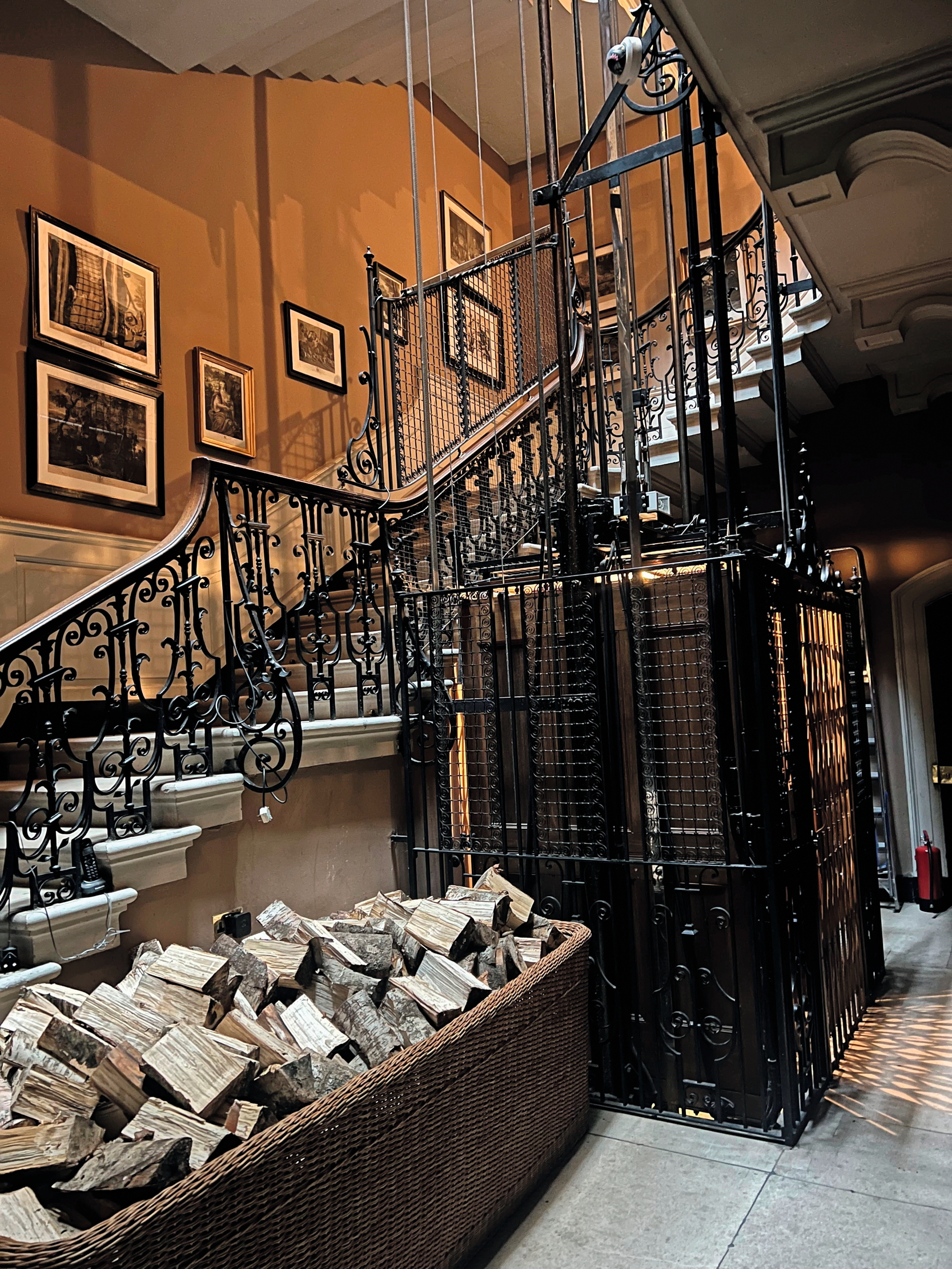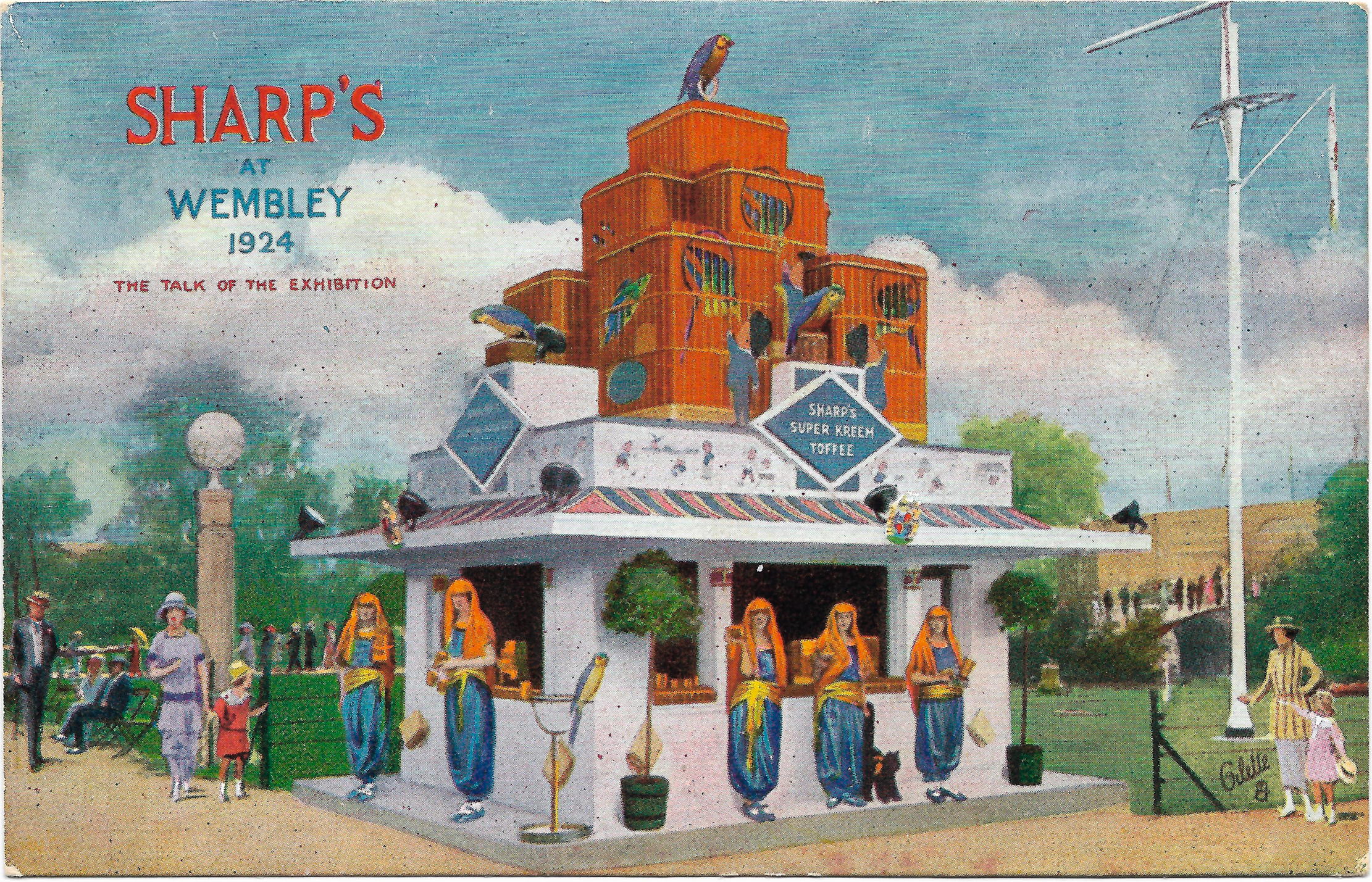'We had to extract her by her legs in an undignified fashion so she could meet him and join us all at the table': The trials and tribulations of the country-house lift
Anyone with a fear of being trapped in a lift may wish to look away, warns Melanie Cable-Alexander, as she explores the grandest alternatives to taking the stairs.


Houghton Hall in Norfolk created an Instagram post recently about its striking lift in the back staircase, built in the 1920s. The post was surprisingly popular and reminded me of rising to the first floor in a similarly constructed cage-style lift at Eastnor Castle in Herefordshire with the late Lord Snowdon, whose level of mobility, thanks to a bout of childhood polio, meant travelling by lift was preferable to stairs — especially post-supper.
As the rattly construction — which had us both quaking in our boots — propelled us upwards, we watched the massive collection of armoury lining the Red Hall walls pass by. We weren’t convinced that we would make it to the top without getting stuck, which James Hervey-Bathurst, Eastnor’s owner, cheerfully recalls happening only once. ‘We have replaced it with a more modern one now,’ he confirms. ‘It is good for visiting Americans who come with a lot of luggage — usually three cases per person.’
Getting stuck in these aged lifts can be an occupational hazard of country-house owners, including the Marquess of Cholmondeley. Houghton’s lift, which was installed by his grandparents, is one of the oldest working lifts in the country, servicing four floors including the basement, and can take about seven people. ‘It works well now, but it used to break down sometimes — once during a Christmas lunch, when my nephew had to be given food through the bars,’ he recalls.
A similar incident occurred at the big house on the Cricket St Thomas estate in Somerset, the inspiration and location for the television series To The Manor Born and now a hotel. On this occasion, its occupant, the estate owner John Taylor’s aged mother, did make lunch, which happened to be with Tony Blair a few days before he was due to become Prime Minister. ‘We had to extract her by her legs in an undignified fashion so she could meet him and join us all at the table,’ reveals Mr Taylor.
Such events seem to often occur before mealtimes. When Janet Montgomery’s late husband, Archie, was due to go out for supper, he became trapped in the lift at his family home in Somerset, North Cadbury Court. ‘He had to pull himself up in a James Bond manoeuvre through the trap door and shimmy up the shaft to the second floor,’ Mrs Montgomery remembers. ‘We arrived three hours late and no one believed us when we explained what had happened.’

Reassuringly, these episodes are a rarity, particularly nowadays when many country houses are either used as event venues, as are Eastnor and Cadbury Court, or when they attract daily visitors who are fascinated by the machinations of old country houses, including the inventions inspired by the Industrial Revolution such as lifts — hence the popularity of Houghton’s Instagram post.
Technology in country houses, which includes lifts, is a topic that has until fairly recently been largely ignored by architectural historians. Now, however, the area is attracting attention as they begin to ‘understand that this is an important part of the story of the house, as it can help illustrate how the house evolved’, both physically and socially, explains Ian West, industrial archaeologist and co-author of the curiously enlightening tome Technology in the Country House.
Exquisite houses, the beauty of Nature, and how to get the most from your life, straight to your inbox.
There was ‘a definite bias’ towards installing lifts in the latter half of the 19th century by those ‘who you would crudely term as “new money”: bankers, entrepreneurs and industrialists. Consequently, traditional country-house owners saw them as a bit bourgeois,’ believes Mr West. That was until Queen Victoria had lifts installed in several properties, including Osborne House on the Isle of Wight and London’s Buckingham Palace. ‘Then people thought, well, if it’s good enough for her, it’s good enough for me,’ he concludes.
There were exceptions, however, such as the innovative and wealthy 3rd Marquess of Bute at Mount Stuart, Isle of Bute, and Algernon Percy, 4th Duke of Northumberland, who had served in the navy before inheriting Alnwick Castle in 1847 and who introduced early hydraulic systems for powering lifts into his Northumberland property, even before Sir William Armstrong, the inventor and industrialist at Cragside, explains Mr West. Cragside, also in Northumberland, is now owned by the National Trust and is regarded as epitomising the technological advances made in country houses during the Industrial Revolution.

Technology in the Victorian era was all about ‘making the house appear to work seamlessly, as if by magic,’ Mr West continues. Most early lift examples were for goods, coal and large containers of water, rather than for people, and tended to be used by servants. An early hydraulic lift installed in the 1870s at Sudbury Hall, Derbyshire, was for staff.
At Eastnor, there’s not only an old coal shaft, ‘preserved for historic significance’, but also an old vegetable lift, says Mr Hervey-Bathurst. The latter was in the basement and used by gardeners to send vegetables and fruit up to the kitchens, so that they ‘didn’t bring muddy boots into the house’. In one case, at Tatton Park, Cheshire, a mini railway was put in the basement, together with a lift to transfer coal about the house, only for the railway to be made redundant 15 years later, when steam piping replaced its purpose.
As lifts moved to more visible parts of the house, they could not only carry luggage, but also people. Now, they were seen as an advantage, particularly in cases of infirmity — Queen Victoria, the Marquess of Bute and Alfred de Rothschild at Halton, Buckinghamshire, among them. The Rothschilds were the techno fiends of their time, competing with each other to build the most spectacular and technologically advanced properties.
One of the earliest electrical passenger lifts was installed at Waddesdon Manor, Buckinghamshire, by Baron Ferdinand de Rothschild. Legend has it that it was built in anticipation of a visit from Queen Victoria in 1890, but she declined to ride it, citing that it didn’t look safe. Sadly, this tale has since been proven apocryphal, as the lift wasn’t put in place until after her visit, in 1898. That lift is now in the old Power House at Waddesdon, although a luggage lift remains in a circular tower where the service stairs are and is still in daily use.
Passenger lifts tended to be more visible than their working counterparts and, therefore, the design of them mattered, hence the prettiness of the one at Houghton. The most striking is the Lutyens-designed lift at Castle Drogo in Devon, built between 1911–30 for the entrepreneur Julius Drewe and now a National Trust property. The lift is no longer in use, but inside the castle there is also a fabulously sophisticated dolls’ house given to the then six-year-old Mary Drewe in 1906 — this not only has running water and electricity, but also a tiny lift powered by string that can still be operated.

Of the country-house owners to introduce lifts in the late 19th and early 20th centuries, Mr West and his co-author, Prof Marilyn Palmer, identify three different social stereo-types. First are the ‘Bachelor Dukes’, including the 5th Duke of Portland, who ‘was really bonkers’ and installed all sorts of technological innovations including underground rooms and roadways so he could come and go without being seen at Welbeck, Nottinghamshire.
Second are ‘the Newly Weds’: the landowner with a new wife. Warwick Castle, Warwickshire, comes under this category, as the 5th Earl of Warwick installed all the mod cons at the castle to make it as comfortable as possible for his new wife, Daisy Greville, and to keep her from the bed of the then Prince of Wales (later Edward VII), with whom she had been having an affair.
Finally, ‘the Technofiles’ encompassed the 3rd Marquess of Salisbury at Hatfield House, Hertfordshire, who was particularly passionate about electricity and barely believed it was possible to get an electric shock, until he received one himself and a gardener died from one.
Lifts are still being installed in country houses. Mr Taylor’s brother Richard established a ‘secret’ one, hidden behind a seemingly ordinary door at Whithurst Park, West Sussex, the splendid house he and his partner Rick Englert commissioned some 20 years ago, deciding that a lift was needed to take them, logs and aged friends up to the top floor and the drawing room. He’s not so much frightened of getting stuck, as his mother did at Cricket St Thomas, but has nonetheless ‘never been in it — because I’m claustrophobic’.
Melanie Cable-Alexander is a journalist and editor

Wembley isn't just a stadium — it was a vision abd a pioneering adventure in the history of architecture
The 1924 Wembley Empire Exhibition was conceived on a vast scale, with a bewildering variety of displays that united such
Country Life is unlike any other magazine: the only glossy weekly on the newsstand and the only magazine that has been guest-edited by His Majesty The King not once, but twice. It is a celebration of modern rural life and all its diverse joys and pleasures — that was first published in Queen Victoria's Diamond Jubilee year. Our eclectic mixture of witty and informative content — from the most up-to-date property news and commentary and a coveted glimpse inside some of the UK's best houses and gardens, to gardening, the arts and interior design, written by experts in their field — still cannot be found in print or online, anywhere else.
